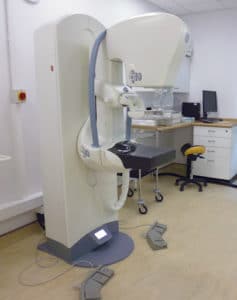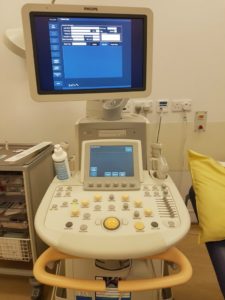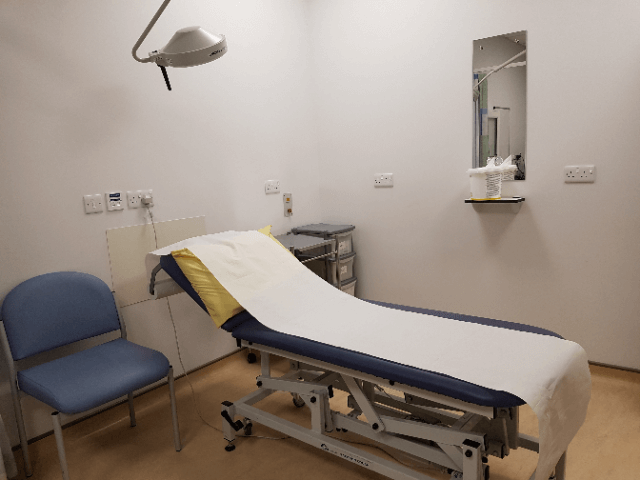If you have noticed changes in your breasts or have any breast symptoms, then your GP may refer you to a breast clinic. The thought of this can be scary, stressful and if you have never been to one before, you may wonder what it involves. I thought it would be helpful to describe what to expect and give some tips you may find useful.
1. How long does a breast clinic visit take?
Expect to set at least 2 – 3 hours for your appointment. This is especially true if you are attending a one-stop breast clinic which I will explain below. Bring something to read or music to listen to, which will make waiting less stressful.
Also, it can be very helpful to bring someone along with you. Having a friend or relative to chat with can be really supportive.
2. First thing to do
On arrival to the clinic, the first thing you will do is to report/book in, with the receptionist. They will normally check your details such as your date of birth and home address to make sure it corresponds to what they have on record.
3. What is a one-stop breast clinic?
Most UK hospitals provide what is called a ‘One-stop breast clinic’ / ‘Rapid diagnostic clinic’ / ‘Same day clinic’.
In these clinics, you will have a ‘triple assessment’ i.e. clinical examination, scans i.e an ultrasound scan, or mammogram or both (if necessary), and a biopsy (if necessary). These are all performed on the same day, one after the other. The doctor will give you these results during the same consultation.
If you have a biopsy, however, you will need to return to the clinic a week or so later to receive the results.
If the hospital you go to does not provide a one-stop breast clinic, then you may need to return to have your scans on another day.
4. Seeing the doctor
In the clinic, you most likely will see a breast surgeon. Sometimes you may see a breast physician and occasionally a nurse consultant. He/she will take a history of your symptoms, relevant past medical history, family medical history as well as your lifestyle habits e.g. smoking.
After taking your history, the surgeon will need to examine you. This takes place on an examination couch which is curtained off to maintain privacy. They will ask you to undress from the waist up, including your bra. The surgeon will then examine your breasts as well as your armpits (axillae). You can ask for a chaperone if one is not present for your examination.
5. Imaging: mammogram and ultrasound scan
If there is nothing worrying on clinical examination and having reviewed your presenting symptoms, the surgeon may not feel you need any form of imaging. If this is the case then the surgeon will give you advice and information leaflets regarding your condition, and then discharge you back to the care of your local GP (general practitioner).
However, if necessary and felt appropriate, you will be sent to have either a mammogram, or an ultrasound, or both.

This is what a mammogram machine looks like.
These are common investigations for breast symptoms and if you want to find out more about them, click here. Your symptoms and age will determine the type of investigation needed.

This is an ultrasound scan machine that is normally located next to the examination couch. You will be able to watch the scan being done in real time.
We will normally perform a biopsy (needle test), under local anaesthetic, if we find an abnormality on your scans. A biopsy does not always mean cancer. Sometimes we do biopsies to confirm benign looking areas too.
The specimen is sent to the lab for analysis to find out the exact nature of the lump/area of concern. This can take up to 7 – 10 days to complete.
6. What happens after I’ve had the scans?
The surgeon will normally see you back in the clinic to explain and discuss the results of your scans. If there was nothing worrisome found, you will be given advice to help manage your symptoms. You may also receive information leaflets. A letter will be subsequently sent to your GP describing what has happened during your clinic visit.
7. Follow up appointments
The hospital will arrange a follow-up appointment for you if you had a biopsy done. Sometimes, the surgeon writes a letter to you describing the biopsy results, instead of seeing you in the breast clinic. If this is planned, you will normally be informed as to what is expected of the results and again information should be provided.
Conclusion
A visit to a breast clinic can be a daunting and stressful, so I hope this description has been helpful. If you feel that you need medical review for a breast symptom then please see your GP who will decide if a visit to a breast clinic is necessary.


